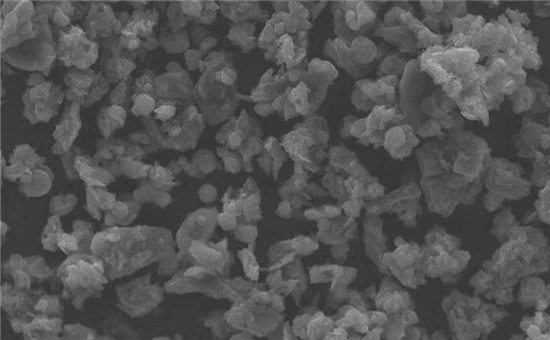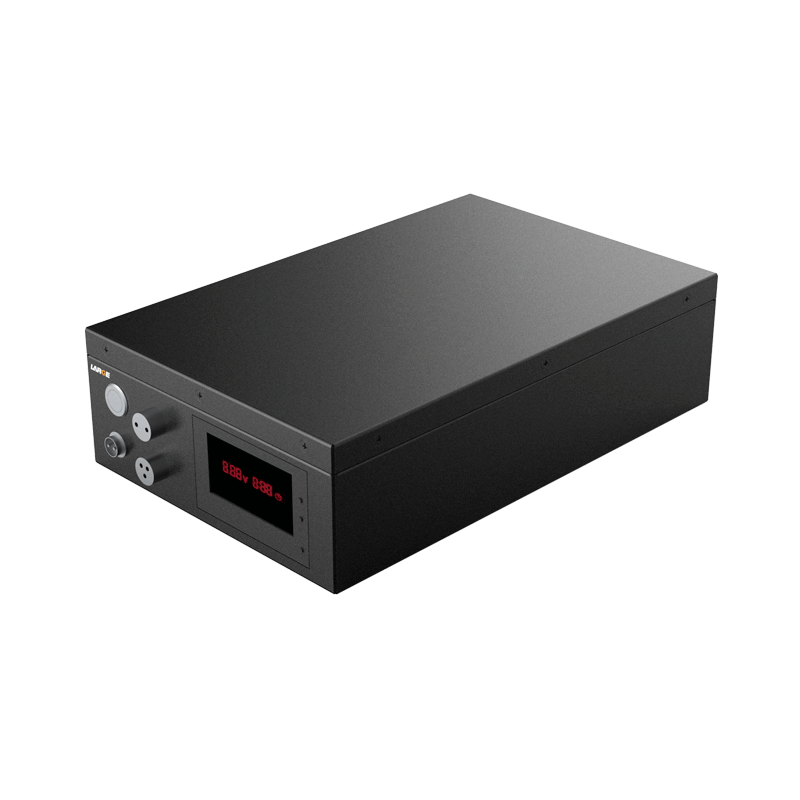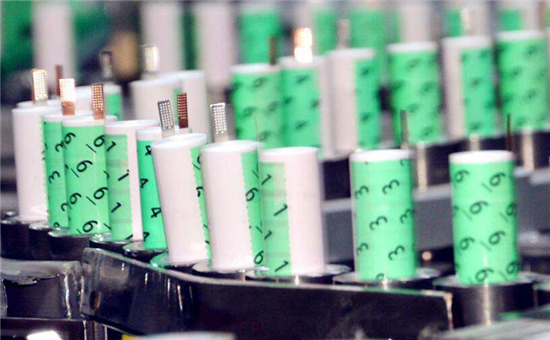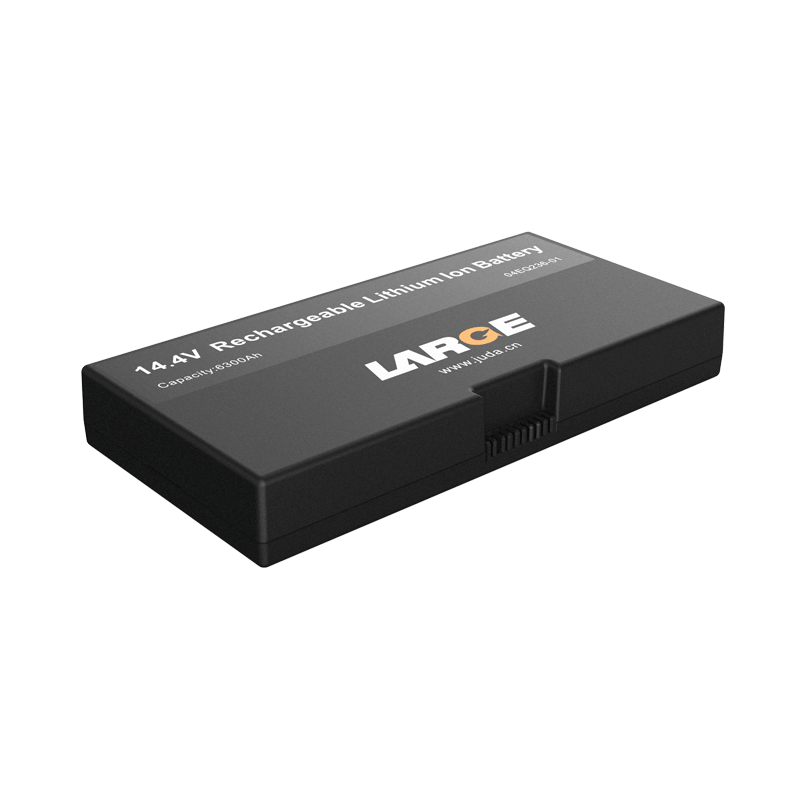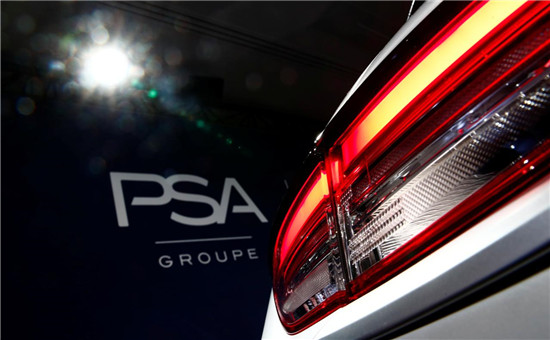Which is better, ternary lithium ion batteries or lithium iron phosphate batteries?
Aug 12, 2020 Pageview:20063
Ternary lithium battery is a lithium battery that uses lithium nickel cobalt manganese (LiNiCoMnO2) as the anode material. The precursor product of ternary composite anode material is made of nickel salt, cobalt salt and manganese salt. The ratio of nickel cobalt manganese can be adjusted according to actual needs.
Lithium iron phosphate battery (LiFePO4 Battery) refers to the lithium ion battery using LiFePO4 as the positive electrode material. lithium iron phosphate battery is considered as a new generation of lithium ion battery because of its advantages such as high safety, long cycle life, rate discharge and high temperature resistance.
Ternary Battery vs LiFePO4 Battery
| Item | Molecular formula | Voltage platform | Specific capacity | Tap density | safety | cycles | cost |
| Ternary Battery | LiNiCoMnO2 | 3.6 | 160 | 2.0-2.3 | Medium | 2000 times | High |
| LiFePO4 Battery | LiFePO4 | 3.2 | 150 | 1.0-1.4 | High | 3500 times | Medium |
Extended reading
Lithium Nickel Manganese Cobalt Oxide (NMC) Battery
Types and characterstics of ternary materials;
pros and cons of ternary battery;
comparison of ternary battery and LiFePO4 Battery
Best Lifepo4 Battery Guide
This article introduces the structure and principle of lithium iron phosphate battery charging, brand and related product recommendations in detail.
Although domestic subsidies for new energy vehicles have begun to decline, the gradual enrichment of infrastructure and the growing number of optional models have also appealed consumers to embrace the popularity of new energy vehicles. In addition to being an alternative solution to the non-purchase of fuel vehicles in restricted area, new energy vehicles have many unique advantages- quiet driving environment, clean energy type, low cost of car daily running, and the instantaneous super-torque output at the vehicle starting, which can envy many friends who drive conventional vehicle.
As the source of electric vehicle power, battery is naturally one of the most important parts of a car. All usage of electric vehicles, such as battery life, charge and discharge, are also inextricably related to the performance of the battery. At present, the domestic power battery is mainly divided into two factions, lithium iron phosphate and ternary material depended on the differences of positive electrode materials. Although both of them are secondary battery, they can be repeatedly used for charging and discharging. The biggest difference is the performance during using process due to different materials.
Ternary lithium ion battery or lithium iron phosphate battery?
To figure out which battery is better, first we should know more about the difference between them.
The lithium iron phosphate battery is a lithium ion battery using lithium iron phosphate as the positive electrode material. The feature is lack of precious metal elements (such as cobalt), so the price can be very low because of such low raw material cost. During actual usage, the lithium iron phosphate battery has the advantages of high temperature resistance, safe stability, lower price and better cycle performance.
The ternary lithium ion battery is a lithium ion battery using Ni-Co lithium manganate as the positive electrode material and graphite as the negative electrode material. Different from lithium iron phosphate, the voltage platform of the ternary lithium ion battery is very high, which means that the specific energy and specific power of it are larger under the same volume or weight. In addition, ternary lithium ion batteries also have great advantages in large rate charging and low temperature resistance.
To be honest, all kind of technology is beneficial. They only have differences in concrete products or environments. As for battery, we can’t make a decision by judging on one hand. During application, the ternary lithium ion battery is more suitable for household electric vehicles than the lithium iron phosphate battery.
Why is the ternary lithium ion battery more suitable for household electric vehicles?
First, better low-temperature discharge performance
China has a vast territory and a complex climate. The temperature is changeable from the northernmost three northeastern provinces to the southernmost Hainan islands. Taking Beijing as an example, as the main market for electric vehicles, the highest summer temperature in Beijing is around 40 °C, while in winter it is basically at around 16 °C, or even lower. Such a temperature range is obviously suitable for a ternary lithium ion battery with a better low-temperature performance. While the lithium iron phosphate battery with high temperature resistance can’t perform well in such a cold winter.
"Relative capacity rate to 25 ° C " refers to the ratio of comparing the discharge capacity at different temperature conditions to that at 25 ° C. This value can accurately reflect the battery attenuation under different temperature conditions, the closer to 100%, the better the battery performance.
It can be seen from the figure above that those two types of batteries have the same discharge capacity discharged at a high temperature of 55 ° C and normal temperature of 25 ° C. However, at -20 ° C, the ternary lithium ion battery has better performance compared with the lithium iron phosphate battery.
Second, higher energy density
According to the information provided by the domestic ternary material of 18650 cylindrical battery leading company - BAK battery, the energy density of its 18650 battery has reached 232Wh / kg, and will be further increased to 293Wh / kg. In contrast, the energy density of current domestic mainstream-lithium iron phosphate battery is only about 150Wh / kg. As domestic battery industry experts saying, the energy density of lithium iron phosphate battery can hardly reach 300Wh / kg in the next few years.
Differ from large electric bus, space is always the first judgement for home electric cars. lithium iron phosphate batteries with lower energy density will take up space in the car, and due to the heavier weight, the battery life will also be greatly affected during application. Relatively speaking, the ternary lithium ion battery with higher energy density not only can save space, but also solve the weight problem.
Third, higher charging efficiency
In addition to battery life, charging is the other important part of the application of electric vehicles, and ternary lithium ion batteries have a great advantage over lithium iron phosphate batteries in terms of charging efficiency.
At present, the common charging method on the market is constant current and constant voltage charging. Generally, constant current charging is the first choice of charging, because the current will be large, and the charging efficiency is relatively higher. After the voltage reaches a certain value, the current will reduce to constant voltage charging, which can make fully charge. In this process, the ratio of the constant current charging capacity to the total battery capacity is called the constant current ratio. It is a key figure in measuring the charging efficiency of a pack of batteries during charging. Generally, the higher the ratio is, the higher the electric quantity in the constant current phase, which makes sure better charging efficiency.
It can be seen from the table that when the ternary lithium ion battery and the lithium iron phosphate battery are charged below 10C, there is no significant difference on the constant current ratio. When charging at a rate above 10C, the constant current ratio of the lithium iron phosphate battery is rapidly decreased, and the charging efficiency is rapidly lowered.
Fourth, safe cycle life
For household vehicles, the rated cycle life of the ternary material and the lithium iron phosphate power battery far exceeds actual user's habits, so the service life can be completely assured. Taking the current high-capacity 18650 battery of the BAK battery as an example, after 1000 charge and discharge cycles, the battery capacity can still remain above 90%. Since the author of this article is also an owner of an electric car, during the coldest days in winter which is no more than one month, the warm air will be frequently turned on, so the car only needs to charge every 2-day, while the rest of the days can charge after 3-4 days. Assuming an average of 3 days a year to charge, it takes about 6 times to charge in a year, and it takes about 8 years to complete the cycle life of 1000 times, which is basically more than the current average car changing cycle of Chinese consumers.
5. Sufficiently safe materials and processes
The most harmful part of the traditional internal combustion engine vehicle is the fuel with huge energy. The low-explosive liquid fuel like gasoline can easily cause great safety hazard once it leaks out. To solve this issue, power battery of the new energy vehicle is monitored by a perfect battery management system (BMS), and each battery can get the most accurate control to prevent accidents.
Take the BAK 18650 battery product as an example, on the single cell process, BAK chooses to arrange protective additives and reactive additives on the positive and negative electrodes to prevent the safety problem caused by the decomposition of the electrolyte. At the same time, safety protection measures such as ceramic diaphragm and negative ceramic coating are added to control the accident from the root cause. In addition, the BAK small cylindrical 18650 battery mode pack maintains a sufficient safety distance between each battery to ensure that the accident of a single battery does not affect other batteries.
Ternary lithium battery is leading the future power battery market
In the field of electric vehicles, USA Tesla has always been the benchmark for many domestic vehicle companies. As for the strength of traditional vehicle companies trying to develop new energy vehicles, the launch of the BMW i3 has become a prototype. Interestingly, both traditional energy vehicles have chosen a ternary lithium ion battery as the power battery. In contrast to the domestic market, many automakers such as JAC, BYD, and BAIC have also begun to replace original lithium iron phosphate batteries with ternary lithium ion batteries.
Just as the old saying: good or bad, proper usage is the best. Foreign auto companies choose the same battery type is a worldwide trending. It is believed that in the near future, the battery market of electric vehicles will be reshuffled. The ternary lithium ion battery will also take an important role in new market based on its low temperature resistance, high energy density, great cycle efficiency and safety assurance.
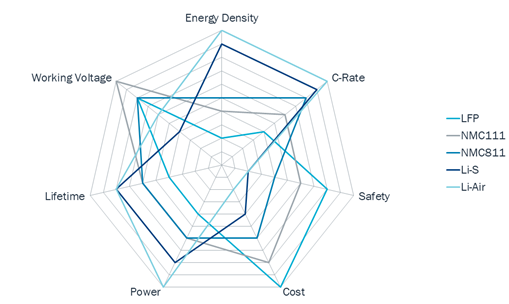
Leave Message
Hottest Categories
-
Hottest Industry News
-
Latest Industry News




